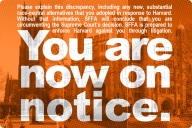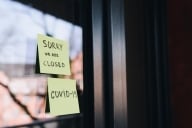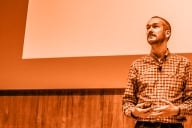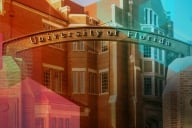You have /5 articles left.
Sign up for a free account or log in.
Twitter has been the catalyst for so many of my professional connections. The platform's simplicity belies its complexity. If you've never tried it, you won't easily get it. Having said that, a consistent occurrence takes place almost every time after I post something on this blog. A friend, colleague, or acquaintance will send me a direct message (Twitter's version of private messaging) with advice on what I should have written. Sometimes I listen, sometimes I don't. However, a DM from a close friend about my "conference sessions do not have to suck" post tugged at my heartstrings and nudged my brainwaves. Their point was basically this: I write from a place that exists only because of where I've been and what I've done. In terms of public speaking / conference sessions, I haven't always been as skilled at it as I am now. Vulnerability is something that I often espouse. In the spirit of vulnerability, here is my path to being a presenter:
Ironically, my public speaking skills were brought about as a result of bullying. In my hometown of Columbus Junction, Iowa, fitting in was part of survival. Kids who were different were often targets for physical and verbal abuse. It never stopped. From kindergarten until my graduation from high school, I was a target. Being different in the sense that I didn't come from a family that had a lot of money, liked to read, and wasn't a true jock made for a difficult K-12 experience.
When I made it to high school, I discovered something. Speaking in front of people made me exceptionally nervous, almost ill, but I simultaneously loved it. Speaking in front of people (speech competitions or plays) was a safe space. No one messes with you when you're on stage. Here was an instance where a social norm actually worked in my favor. I competed in numerous speech competitions and even acted in a couple of plays. Improvisational acting was my favorite category. I wasn't bound by a script. I could make my own rules. Public speaking was the single most-rewarding thing that I did in high school. Sandra Martin taught several of my English classes in high school, but I am ever thankful for her mentorship as my speech coach.
So that's how I got into speaking in public. A safe space became an enjoyable place to share ideas, concepts, and sarcasm. But, that's not the end of the story. When I landed my first official Student Affairs position at the University of Illinois at Chicago (UIC), I had no idea how much more I would learn about giving presentations. Orientation season became one of my favorite times of the year. I gave several presentations to incoming students. My schtick was that they would always boo me as I shared wellness statistics. I knew that laughter and boos were equal in that it meant that students were paying attention to me. One of my co-workers suggested that we get a presentation remote. Free to move about, I would wander all over the front of a presentation space. It was so similar to when I was acting in high school. Education became performance.
While at UIC, I had the opportunity to present at a regional NASPA event in Milwaukee. Back then, LCD projectors weren't ubiquitous. I had to bring one from the office. PowerPoint was the standard tool for presentations. I remember reading Seth Godin's thought piece on how to give PowerPoint presentations that didn't suck. I was hooked. Gone were the bullet points and horrible clip art of past PowerPoints. Instead, I opted for simple representations of concepts. My NASPA session was about website statistics and web accessibility. I honestly can't remember how I connected things together. Evaluations from that first professional session were not very positive. People wanted handouts and slides that told them everything that I was going to say. Thankfully, a couple of NASPA rock stars (Luoluo Hong, you made my day!) stepped in and gave me some words of encouragement. I've never given a presentation since that one that didn't use the same style. If my slides can be consumed without me, they probably aren't my slides.
In the years after that initial NASPA presentation, I went on to present at several regional and national events. Presenting is a craft and I was getting a lot of practice. When the Oklahoma Academic Advising Association (OACADA) asked me to be their keynote speaker, I was incredibly nervous. There's something quite different about speaking for money. My honorarium wasn't a lot. But, it was a momentous occasion. I had an hour to speak during the lunch slot. My slides were like an excruciating labor of artistic love. I spent a massive amount of time crafting that talk. Unfortunately, I had forgotten that less is more. Packing too many slides into an hour meant that I ended up rushing. If I was grading myself for that particular talk, I think I would've given myself a C+. It wasn't terrible, but it was hardly exceptional. Looking back through the slides from that presentation, my other major mistake was that I made my talk more about me than about my audience. Lessons learned from my OACADA talk: Simple is better than complicated and it's not about me, it's about my audience.
The paid speaking gig in Oklahoma was the beginning of my career as a professional speaker. After I started working as an Academic Advisor for Oregon State University (OSU), I continued to get better at speaking and at creating experiences. Talks are experienced by the audience. Orientation sessions during the summer at OSU gave me ample times to improve my skills. The biggest lesson learned from those presentations was that the more I was myself, the better my talk would be. My sarcasm, random use of English words, and incorporation of media made for talks that I enjoyed giving. If I enjoyed giving a talk, my audience generally enjoyed themselves too. It was reciprocal. However, it didn't always work out perfectly…sometimes sarcasm needs to be tempered. Lessons learned from this time in my life: Public speaking works best when I'm being myself and when I'm in tune with my audience.
Since my time at UIC and OSU, I have worked continuously to refine my craft. Critiques, while sometimes bluntly delivered, can be transformative. I welcome any and all feedback because it makes me better at what I do. The keynote speeches that I give today are a reflection of so many of the speaking experiences that I have done in my life. I still get nervous. Butterflies abound. However, I tend to use that burst of adrenaline to amplify my excitement. Butterflies are a good thing. If you've ever seen me speak, you've probably noticed that I'm a hand talker. I can't keep still. If possible, I always try to get podiums removed from stages. Audio and video play a major role in my talks. I like to add music during certain slides. Videos are essential. Public speaking is a combination of show AND tell. Lesson learned: Being a professional speaker is a continuous journey of improvement, refinement, and listening. I love it.
Some of the speakers that I like to learn from include: Gary Vaynerchuk, Sally Hogshead, and Guy Kawasaki. Additionally, I'm a big fan of Nick Morgan's "Public Words" blog.
This year has been a banner year already for me. There's a reason why I wrote a post about travel gear for the frequent flyer. Here's what's coming up on my speaking schedule:
- The 140 Characters Conference: Syracuse
- Memphis In May Student Affairs Conference
- NACCU Annual Conference
- The Big Ideas in Higher Education Conference
- NAFSA Annual Conference & Expo
- Emerging Challenges and Opportunities in Higher Education Symposium
Now that I've written this, I'm sure that I'll get a few more DMs from folks. Thanks for the conversation and ideas. Keep 'em coming.
Do you tweet? Let's connect. Follow me on Twitter.








